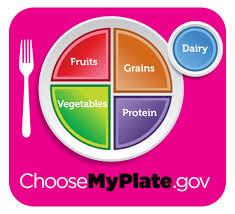10 Tips to Add More Vegetables to your Day

Most of us have heard we should have half of our plate or meal consist of vegetables or fruits. Eating vegetables is important because they provide vitamins and minerals and most are low in calories. But how do you do that? Here are some tips to add more vegetables to your day.
- Discover fast ways to cook – Cook fresh or frozen vegetables in the microwave for a quick and easy dish to add to any meal. Steam green beans, carrots, or bok choy in a bowl with a small amount of water in the microwave for a quick side dish.
- Be ahead of the game – Cut up a batch of bell peppers, cauliflower, or brocco9li. Pre-package them to use when time is limited. Enjoy them in a casserole, stir-fry, or as a snack with hummus.
- Choose vegetables rich in color – Brighten your plate with vegetables that are red, orange, or dark green. They are full of vitamins and minerals. Try acorn squash, cherry tomatoes, sweet potatoes, or collard greens. They not only taste great but are good for you, too.
- Check the freezer aisle – Frozen vegetables are quick and easy to use and are just as nutritious as fresh veggies. Try adding frozen vegetables, such as corn, peas, edamame, or spinach, to your favorite dish. Look for frozen vegetables without added sauces, gravies, butter or cream.
- Stock up on veggies – Canned vegetables are a great addition to any meal, so keep on hand canned tomatoes, kidney beans, garbanzo beans, mushrooms, and beets. Select those labeled as “reduced sodium,” “low sodium.” Or “no salt added.”
- Make your garden salad glow with color – Brighten your salad by using colorful vegetables such as black beans or avocados, sliced red bell peppers or onions, shredded radishes or carrots, and chopped red cabbage or watercress. Your salad will not only look good but taste good, too.
- Sip on some vegetable soup – Heat it and eat it. Try tomato, butternut squash, or garden vegetable soup. Look for reduced- or low-sodium soups. Make your own soups with low-sodium broth and favorite vegetables.
- While you’re out – If dinner is away from home, no need to worry. When ordering, ask for an extra side of vegetables or a side salad instead of the typical fried side. Ask for toppings and dressings on the side.
- Savor the flavor of seasonal vegetables – buy vegetables that are in season for maximum flavor at a lower cost. Check your local supermarket specials for the best in-season buys. Or visit your local farmers market.
- Vary your veggies – Choose a new vegetable that you’ve never tried before.

